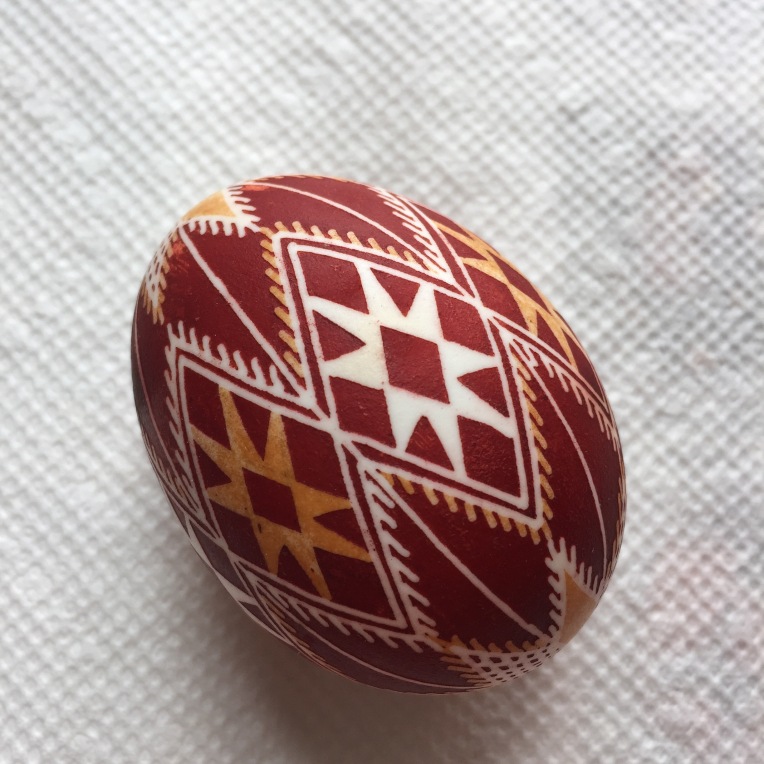Some more experiments with same dyes, except this madder is from roots, not from powdered extract. In the first egg I overdid it with madder (because I have both light and dark red from the same dye), and it ate though the wax and messed with the yellow of coreopsis. Duck eggs.
Month: July 2016
Logwood dye (extract)
Logwood is and old dye (apparently it’s been used for dyeing since 16th century). It is supposed to give a range of colors from blue and purple to black. I got sort of dark brown with the addition of alum and chalk.

I found the dye to be not particularly eager, maybe it doesn’t like eggs so much. It also comes off easily when the wax is being taken off with candle. That, however, I have noticed with a number of natural dyes, that you have to be much more careful and gentle when taking off the wax, than with chemical dyes. So I often add much more wax before taking it off to seal the whole surface of the egg. Another thing I noticed is that the natural dyes seem to burn much easier than the chemical ones, that is, also when the wax is taken off with the candle.
UPD: To help set the logwood dye in other eggs, I have over-dyed them with another dye (in that case red sappan wood). While the egg remained almost black, the powdery surface of logwood was nicely sealed, and the issue of the dye coming off with wax has been resolved.
To see other eggs dyed with logwood, use logwood tag.




